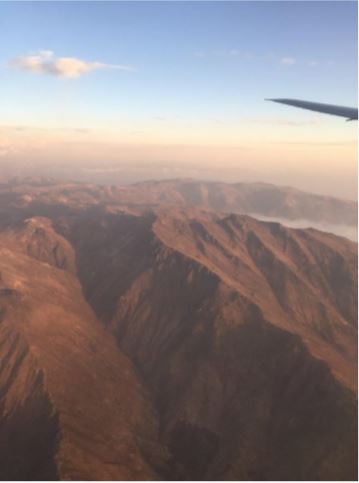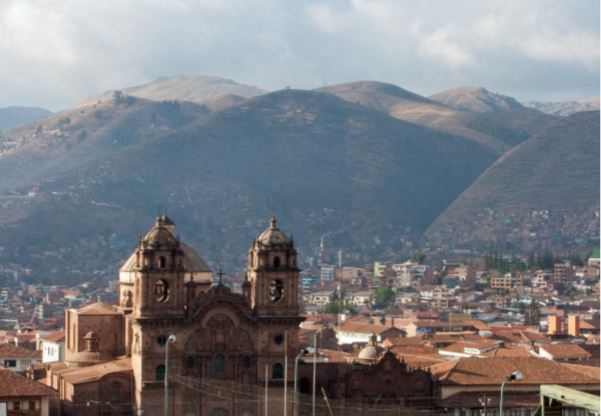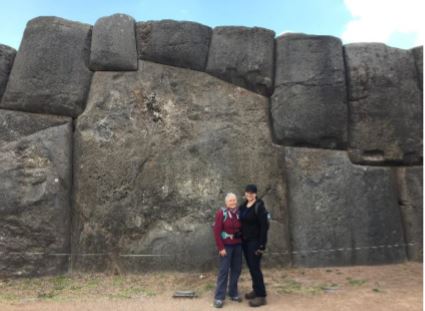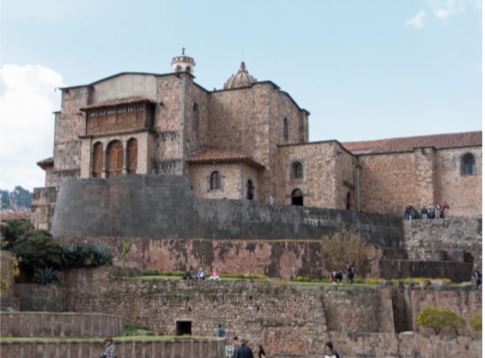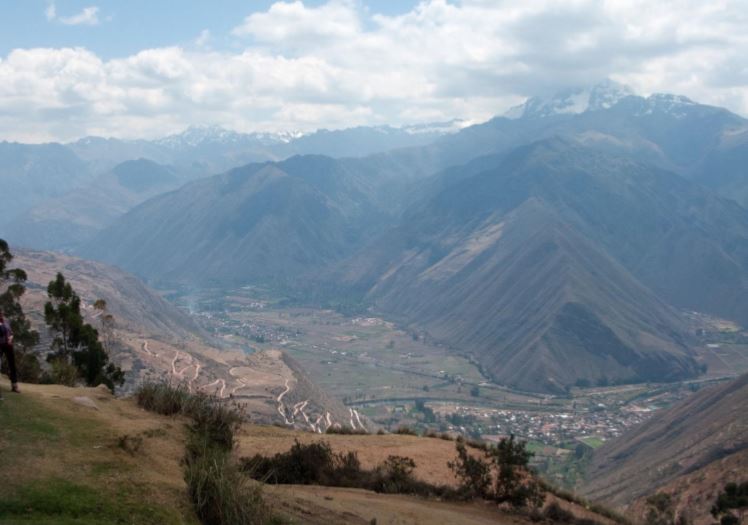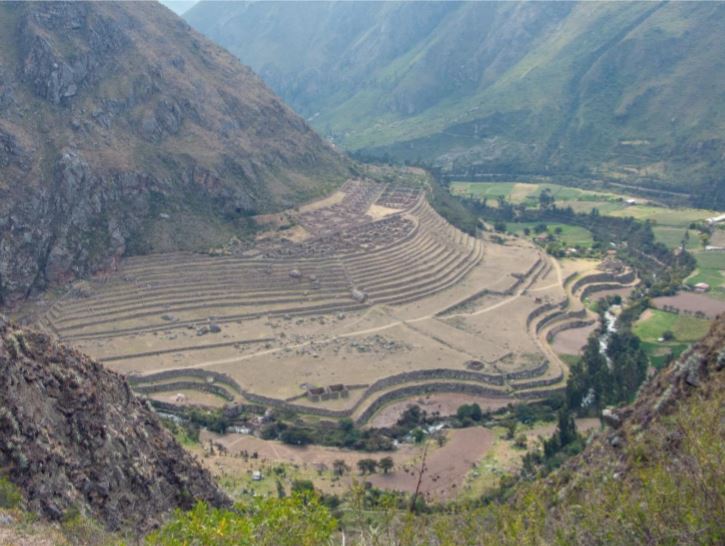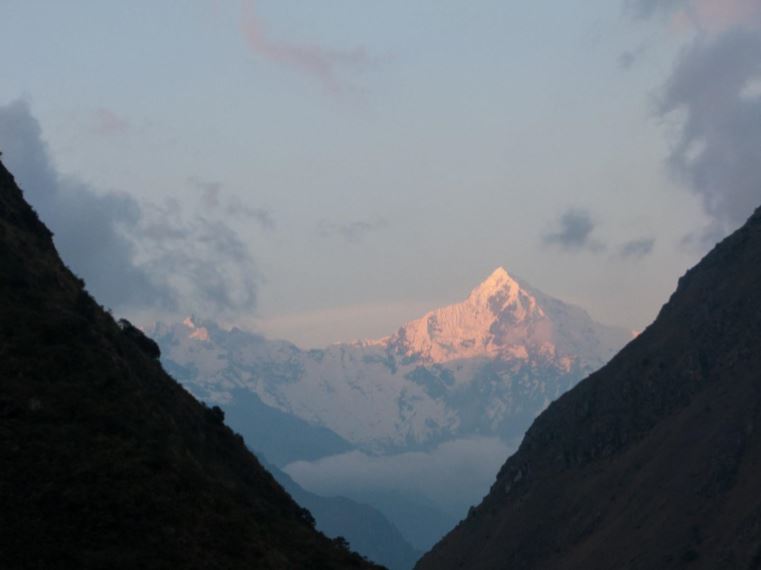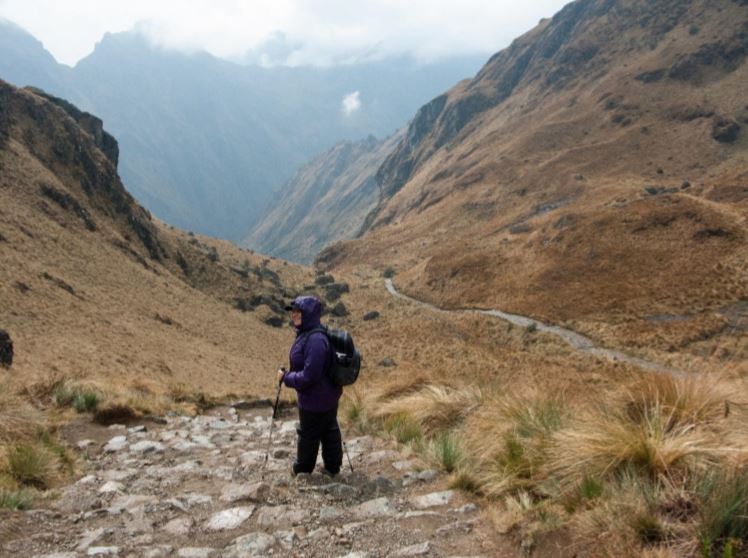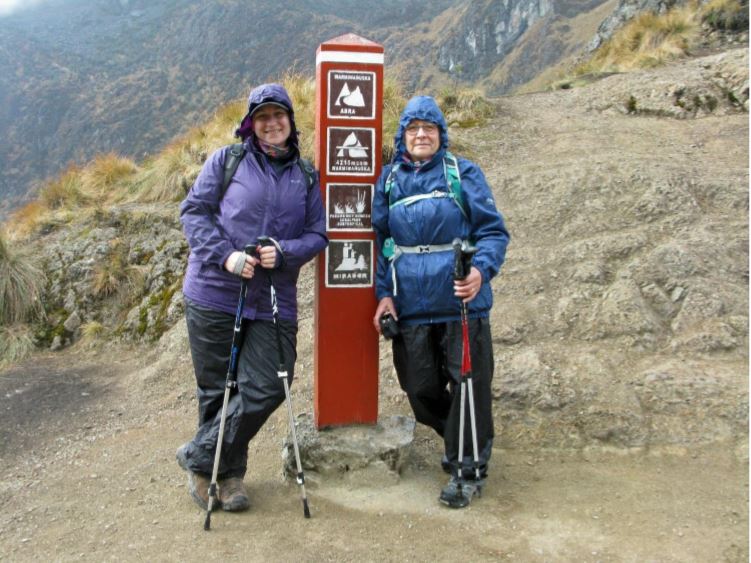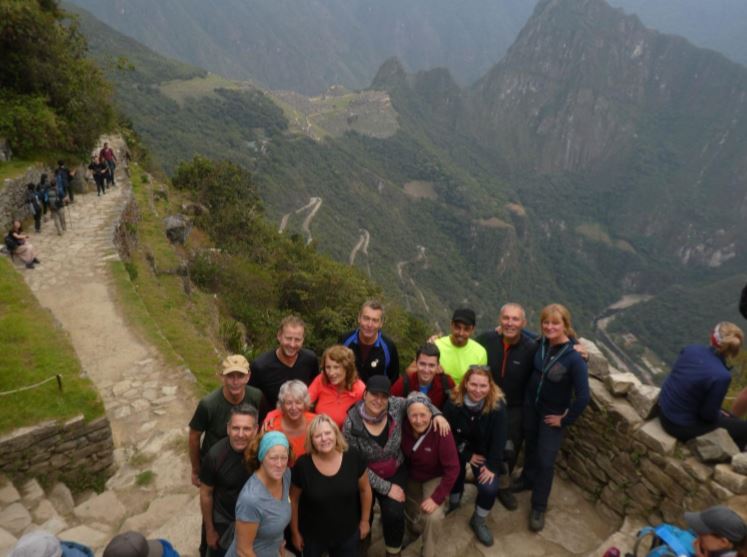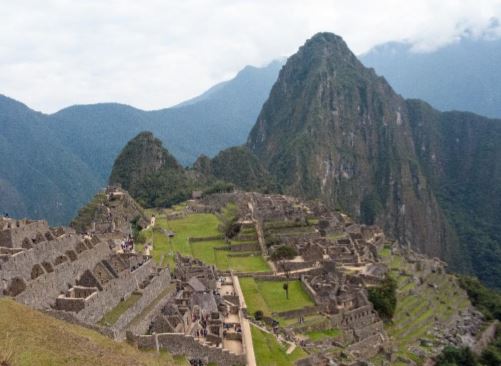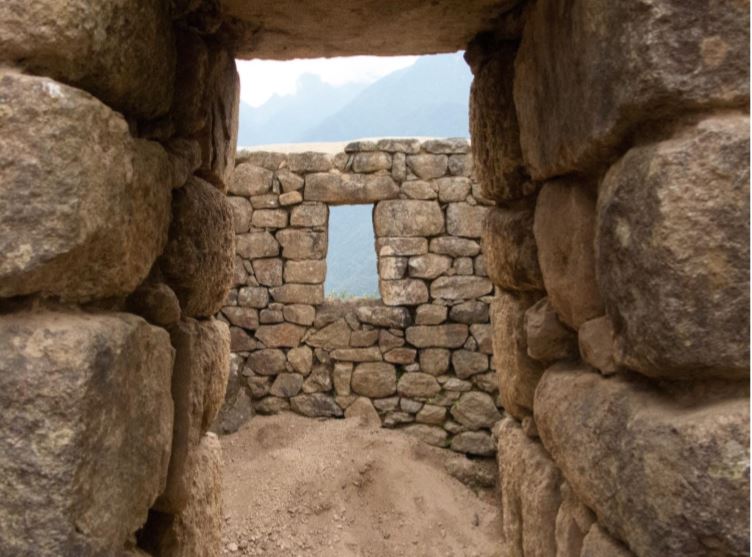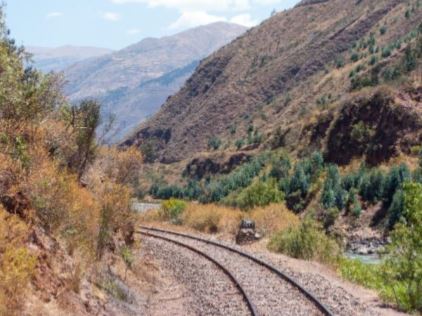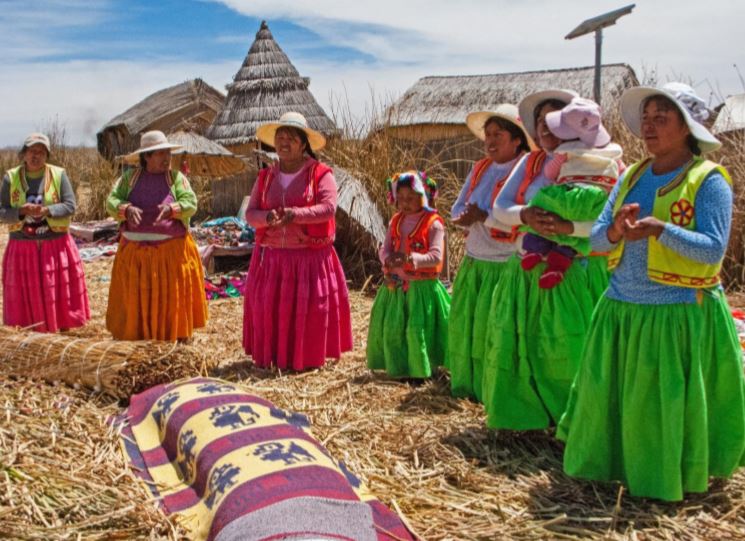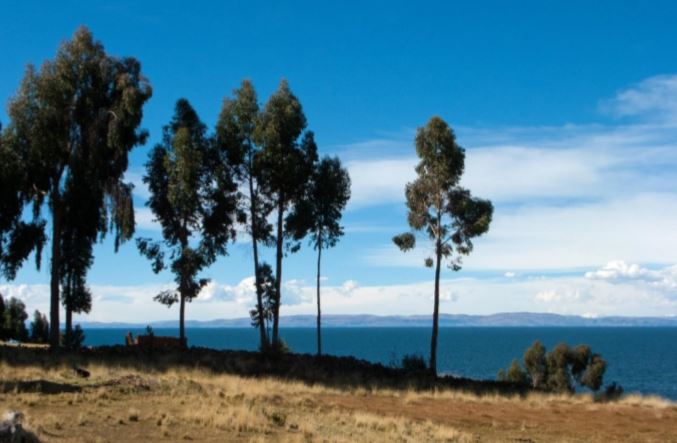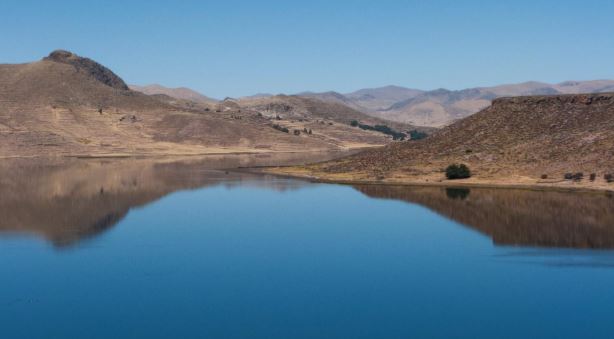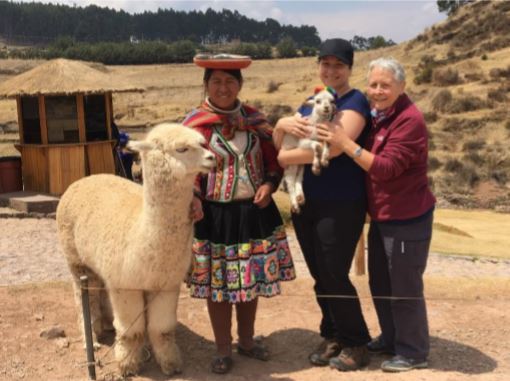-
Latin America
Latin America
- Countries (hidden space)
- Galapagos & Ecuador
- Guatemala
- Mexico
- Panama
- Peru
- Popular Attractions
- Machu Picchu
- Inca Trail
- Easter Island
- Galapagos Islands
- Patagonia
- Rio de Janeiro
- Iguazu Falls
-
Africa
Africa
- Spacer Africa
- South Africa
- Zimbabwe
- Popular Attractions
- Cape Town
- Okavango Delta
- Sossusvlei Dunes
- Victoria Falls
- The Kruger
- The Garden Route
- Masai Mara
-
Asia & Middle East
Asia & Middle East
- Asia
- Borneo (Malaysia)
- Cambodia
- India
- Japan
- Middle East
- Jordan
- Spacer Asia
- Laos
- Sri Lanka
- Uzbekistan
- Vietnam
- Popular Attractions
- Taj Mahal
- Lion Rock (Sigiriya)
- Angkor Wat
- Ha Long Bay
- Kyoto
- Petra
-
Destinations
- Latin America
- Argentina
- Bolivia
- Brazil
- Chile
- Colombia
- Costa Rica
- Galapagos & Ecuador
- Guatemala
- Mexico
- Panama
- Peru
- Asia
- Borneo (Malaysia)
- Cambodia
- India
- Japan
- Laos
- Sri Lanka
- Uzbekistan
- Vietnam
- Middle East
- Jordan
- Southern & East Africa
- Botswana
- Kenya
- Namibia
- South Africa
- Zimbabwe
- Contact Us
-
About
About
Llama Travel provides high quality holidays at the lowest possible prices.
99% recommend us Lower prices - guaranteed Financially protected by ATOL
The Llama Travel Blog
A Llama Travel Customer's Journal From Peru
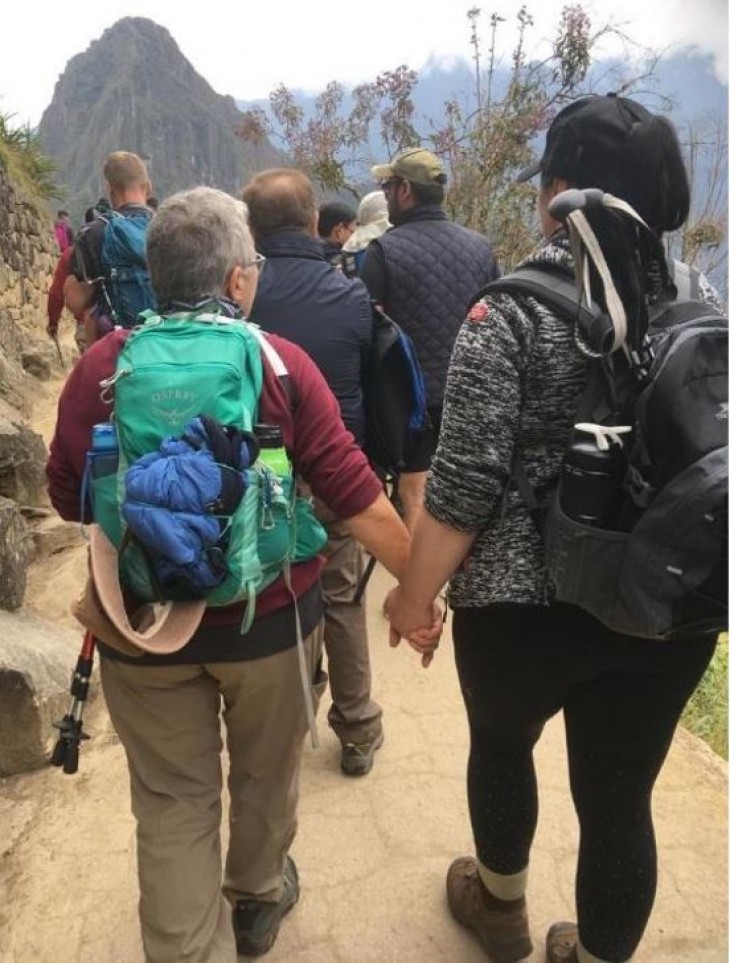 Hiking the Inca Trail
Vivien Eliades
Hiking the Inca Trail
Vivien Eliades
This trip has been in the offing since nearly two years ago when I was having lunch with Flo at our favourite eatery. She said to me, “Mum, do you still want to go to Peru?” . It’s something I’d dreamt of since learning about the people of the Andes at junior school, aged about 9 or 10 and had been inspired by the pictures of the people, their textiles and the mountains. We spent some time comparing companies and decided to go with Llama Travel, who gave us a good price and seemed friendly, experienced and well organised (the clue is in the name!).
So here I am in a twin room at the Casa Andina Select Hotel in Lima at the end of our first full day.
Lima
Smooth operations at Gatwick checking in the luggage, going through customs etc. A very long 12½-hour flight made me realise the extent of the Atlantic Ocean. Then we started the descent into Lima through the clouds and the stunning mountains of the Andes, bathed in late afternoon sunlight, came into view below us, with clouds swirling in the valleys. Beautiful. Earlier we’d flown over Guyana and Brazil, mostly forests and rivers. We’d arrived on the other side of the Equator!
Lima airport is in a big industrial area; very modern, extremely busy and somewhat chaotic. We showed our passports and found our way amongst the throngs to reps in red fleece jackets and holding Llama Travel signs. Relief. The bus driver took our suitcases and piled them onto a trolley which he pushed all the way through the car park to the bus. While waiting, we’d got chatting to others in our group.
The journey to the hotel in Miraflores was a bit hair-raising. The driving and the traffic are crazy, with hawkers walking in the midst of it selling soft drinks and snacks to the drivers! By now it was dark and before long we were travelling along the coast, with big white waves illuminated by the city’s lights. Our first glimpse of the Pacific Ocean.
After breakfast, we met our guide for the morning, Miguel, and the other members of our group, and set off for Lima proper, stopping to pick up others from the slightly more upmarket hotel a couple of blocks away. On the way, Miguel regaled us with tales of his life as a ‘Gringo’. His father was Irish, his mother Peruvian. We visited a pre-Inca site – a kind of pyramid built of mud bricks built like book shelves with cement between the layers, but not between the bricks, to avoid destruction by earthquakes. There were gardens with different cacti, including the one that produces the hallucinogenic drug mescaline; fruit trees and vegetables that are native to Peru: potatoes, beans, squash, tomatoes, quinoa and more. Back in the coach to Lima Cathedral and the Catacombs, where people were buried in coffins 10 deep. The church above the catacombs, like all Catholic edifices, was rich in gold and carvings with the saints depicted everywhere. By contrast, outside the impressive building, were many people, many dressed in traditional costumes, touting their wares of all kinds – clothing, paintings, jewellery, wooden artefacts.
Cusco
The flight was quick and the views over the Andes, with intermittent cotton-wool clouds, awesome. On the mini bus transfer we met others who were doing the Inca Trail (many who we met in Lima were going to the jungle). We sat with them drinking coca tea at Los Portales Hotel. It’s a beautiful hotel with an atrium full of plants and lots of traditional fabrics and artefacts.
We began to suffer a little from the altitude (from sea level to 3,400 metres, not surprising really), so lay in bed all afternoon, then had a slow walk as the sun went down, taking photos of this beautiful town.
The architectural influence seems to be mostly Spanish – very ornate. Lots of religious establishments and an illuminated white statue of Christ atop a hill. We’re surrounded by beautiful mountains, turning colour with the setting sun.
We walked (still quite slowly!) to the main square and ate ceviche – raw fish ‘cooked’ in a marinade of lime juice – served with potatoes and a lovely version of corn; sweet and white, and the most enormous bowl of fish soup, with a whole crab, a whole fish and plenty of prawns, scallops and octopus.
Feeling very satisfied and much better, we strolled back to Los Portales for an early night. We’re both quite overwhelmed by the beauty of this place and the amazing friendliness of its people.
Our excursion began at about 9am. We were met at the hotel and taken by minibus to some of the Inca sites around Cusco, starting at Saqsayhuaman (sometimes pronounced ‘sexy woman’ to make the tourists giggle), an impressive Inca citadel with stupendous views of the mountains. We discovered that Inca means ‘king’, so is only one person.
After Saqsayhuaman, we went further down, having climbed to a higher altitude than Cusco, to Q’enqo and Puka Pukara, learning about Inca construction methods and how they transported massive stones on wooden rollers with teams of people with ropes. From Puka Pukara, where the constructions were phenomenal – almost as big as Stonehenge at the base, and perfectly shaped to fit together without mortar – and the views over Cusco tucked into the huge valley were fantastic.
Our final stop was at the Church of Santo Domingo, which was built on the site of an Inca temple: Coricancha, the Temple of the Sun, which was destroyed by the Spanish. A golden work of art on the wall depicted Inca life. They understood astronomy, knew the earth was spherical and knew there were planets and stars. The sun was their god and the moon was the queen’s god. What a very advanced, intelligent culture!
Back at the hotel, we slept for 2 hours before a briefing for the Inca Trail trip on Thursday. Our guides are Hector and Ronald and we feel very reassured that they understand everyone’s needs.
Sacred Valley
Our guide arrived on time at 8am to take us to Sacred Valley for the day. The scenery, once we’d left the crazy rush-hour Cusco traffic, was fantastic. Our guide, Juan, made sure we stopped to take photos of the craggy snow-capped mountains. Our first proper stop was Chincheros where we saw terracing for vegetable-growing, down into the valley with rugged mountains beyond.
The main square was full of sellers of woven/knitted goods but we kept our cash to ourselves, as we were then taken to a textile and weaving centre where we were treated to a demo of washing of the baby alpaca fleece, dyeing, spinning and weaving it, by three women in traditional costume. I’m amazed at how many (nearly all in the countryside) women wear traditional clothes. I suppose they don’t have clothes shops nearby and make all their own clothes in the way their ancestors did. After the demo we had a look around at the items for sale and I bought some baby alpaca knitting wool in beautiful colours. It felt good to buy from the person who who processes the yarn. We saw the alpacas out in the back, so the whole enterprise took place under one roof. We also saw a cat and her lovely kittens and displays of different types of potato and corn.
There was a bit of a drive then to our lunchtime stop, Urubamba - a beautiful place with well-tended gardens and an excellent buffet with plenty of non-meat options. We sat with four others and it was good to get to know them. All of us on the trip today will be on the Inca Trail on Thursday.
After lunch and about a half an hour’s drive, when some of us nodded off, again through beautiful countryside along the Urubamba river valley, we arrived at the settlement of Ollantaytambo. The Incas had begun creating steps up to what would become a sun gate at the top. We all trudged up the uneven steps – another World Heritage Site protected by UNESCO - and were glad to have some preparation for the Inca Trail. We only got a bit breathless, but then it was lower altitude than Cusco by 500m. The views at the top were spectacular; so many mountains, and one had a face cut into the rock, and dwellings perched precipitously up the mountainside.
I’m going to have to stop using so many superlatives, as I’ll use them up before the trek! Each day seems to be better than the one before. Today was wonderful.
Back in Cusco and an early start to visit San Pedro Market, which sells a fantastic array of food, as well as traditional clothes and knick-knacks. Many people were there eating their breakfast and you could get smoothies from people standing beside heaps of really fresh-looking fruits. There was a fantastic range of vegetables and herbs all piled high and a stall so full of flowers that the stall-holder was hard to spot.
Our bags are packed, our Condor Travel duffel bags packed and weighed, and we’re having an early night with the alarm set for 4.15! Tomorrow I’ll be writing by the light of my head torch!
The Inca Trail
The Inca Trail - Day 1
Sure enough, here I am in the tent writing by the light of my head torch! What a day!
Hector came for us at 6 and we drove to Ollantaytambo to pick up the rest of the group – 15 of us – some had stayed on in Sacred Valley. We arrived at the checkpoint for the beginning of the Trail and had to show our passports, before crossing the Urubamba river on a swaying bridge to begin our trek. The scenery has gone from awesome to stupendous (what did I say about superlatives?), the path sometimes rising, with awkward steps, sometimes descending, with awkward steps.
The vegetation is lovely; agaves clinging to the rocky mountains, prickly pears, trees with bunches of red pods, shrubs with bright yellow flowers like broom, and those long white trumpet flowers that are hallucinogens (Datura) and grow as trees here. There’s always the sound of the rushing river and occasional glimpses of a pointy snowy peak, the best view being at sunset.
We saw a beautiful Inca settlement that’s been 45% restored in a valley, quite early in the walk, with terracing for agriculture and right by the river for irrigation, where two rivers meet.
After many ups and downs, dust and steps, seeing locals in their colourful clothes with their children, and several stops for water, we finally arrived at our campsite. Lunch by the way was superb. Mushroom and vegetable soup with bread, and for us veggies, strips of cheese like halloumi with stir-fried veg and a piece of fried yucca.
When we arrived, the tents were already set up with the correct bags inside, dinner was cooking and the porters had also prepared warm water for us to wash. Dinner was vegetable soup, lightly fried trout with mixed veggies and potatoes, and a chocolate pudding. Everyone was in high spirits.
The stars are shining bright and some are shooting across the dark sky, the Milky Way is clearly visible and all is well.
The Inca Trail - Day 2
We made it! We knew this would be a hard day, but it really was hard. Nearly all uphill, the path took us through some beautiful forests with waterfalls and rushing water, beautiful flowers and shrubs and spectacular views of mountains in all directions. It was really hard going, as most of the path is uneven steps, so we had to stop frequently for water and/or snacks. Hector the guide is brilliant; really encouraging and kind.
I’m amazed at the porters. They’ve carried 8 2-man tents, 15 sleeping bags and mats, calor gas bottles, pots and kettles, fold-up tables and stools, cutlery, food, plastic bowls. Heroes, every one. They also get up really early to make breakfast, bring tea to our tents and water for washing. Breakfast is great – quinoa porridge, toast – plenty of carbs for our strenuous activities – juice and tea. We were given cloth bags that they put our snacks into each day, and we fill our bottles with water that they’ve boiled for us.
The place we stopped for lunch was lovely with many birds – the most I’ve seen since our arrival in Peru. Some finches with striped heads; a couple of shrikes and some long-legged black birds with yellow beaks. The national flower is a pendulous fuchsia which grows abundantly.
We finally made it to Dead Woman’s Pass – the highest point of the trail at 4,200m – in our wet weather gear. The silence in the cloud-covered mountains was awe-inspiring. By now, we were both really tired. We’d been walking on difficult terrain for about 8 hours. We filled our bottles in a stream and just kept going. The camp site was tantalisingly visible. When we eventually arrived, 2 of the porters greeted us with applause and showed us which way to go, brought us warm water for washing and we immediately removed our boots and socks and soaked our feet. It was just after 5pm and almost dark. We received hugs and tea and pastries. What a lovely bunch of people.
The Inca Trail - Day 3
Wow what a day. The walk to the next pass, lower than Dead Woman’s Pass, was a gruelling uphill trek, stopping occasionally to view some Inca ruins. We had a snack stop near a beautiful lagoon where there was a sacred site. Hector had asked us to keep a stone each from another site we visited that morning and we did a very touching ceremony to bring us luck.
Along a difficult stretch of path, Flo got really dizzy and Susan caught her before she fainted. Ronald gave her oxygen. About 20 minutes later it happened again and she had more oxygen and seemed a bit better. I was so worried about her, but we eventually made it to our lunch stop. By the time we arrived, everyone else had had their lunch and when we ate ours, Hector brought a mug of tea for Flo, saying it would help her. I asked what was in it, and he said, “Oh, some celery and some roots.”
After lunch, Hector sent the chef, Julian, and one of the porters, Tomas, to help us out on the trail if we needed it. We hadn’t realised how far it was from the lunch stop to the camp. The weather had cleared a bit and along the way we saw a woodpecker, which we heard drilling before we saw it, a toucan, a hummingbird, and heard crickets and blackbirds. The going was really difficult, picking our way with our poles carefully placed before stepping down the steep, uneven and slippery steps.
We soon realised that we may not get to camp in the light and that was why Hector had sent extra helpers with us. The snow-capped mountains to our right were turning pink and Ronald told us it may take us 2 hours to get to camp. We passed through a dark tunnel and the path was by turns steps and stone path, twisting and turning around and down. There wasn’t time for many photos; our attention was concentrated completely on where to place our feet. Eventually, as darkness fell, Flo commandeered Susan’s torch and charged off with Ronald, a totally different person from this morning. I began to wonder what was really in that mug of tea!
Julian the chef confiscated my poles, took me by the right elbow and we both charged off together down the hill. He filled me with trust and confidence with a really gentle manner, shining his lantern to show me where to place my feet. I was a bit concerned about who was going to be cooking our dinner! We eventually arrived at camp after an hour and a half in the dark, to applause from the porters (this is becoming embarrassing!) and hugs from our Inca Trail friends. We felt tired, achy, elated and a great sense of achievement.
Dinner was soup, then a traditional dish with lots of onions and beef for the meat eaters and tofu for us, with rice. Then Julian appeared with a beautifully decorated cake that he’d made for our last supper together as this particular group. We realised how many eggs the porters must have carried up and down that steep and rocky trail, all so we could enjoy frittata and Julian’s lovely cake.
Tomorrow is our last day of the trail – Machu Picchu here we come!
The Inca Trail - Day 4
My goodness, what a day! We’re aching all over and exhausted. But we did it! Machu Picchu was more amazing than I’d anticipated.
The climb to the Sun Gate was just as gruelling as anything we’d done in the previous 3 days – just shorter. We arrived at the Sun Gate at about 7.20 and got our first glimpse of Machu Picchu in the distance. A further walk downhill (those poor thighs!) for about 45 minutes took us to the classic view that’s known the world over. Along the way, we met others coming towards us who were clean, with clean clothes and shoes, who must have wondered who this scruffy lot were. They were the ones who had arrived by train and were walking up to the Sun Gate.
Machu Picchu
The layout of the site was well organised with a one-way system to avoid overcrowding. Hector guided us through the lost city, stopping about 5 times to describe the religious, living, working and sacrificial areas and there were loads of photo opportunities, with huge mountains surrounding this beautiful place, their tops intermittently visible through the clouds. It’s a fascinating site and worthy of its fame. Hector stamped our passports with a Machu Picchu stamp (so proud!) and then we joined the queue for the coach to Aguas Calientes.
Ronald took us to a restaurant where a table had been booked for our party. We all toasted our wonderful guides and each other for our amazing achievement over the last four days. We were serenaded during all this by a young man playing guitar and pan pipes and singing Andean songs.
We began the final leg of the journey. Lots of hugs goodbye for those leaving early tomorrow, and Hector. The hotel staff had given us a quiet room at the back, as we had requested, and our suitcases were already in place. Beds with sheets and duvets! Light switches! Proper bathroom! Shower! Oh, how we’d dreamed of having a shower. Now we’re all clean and lying in our beds with clean sheets; aching, tired and very happy.
Belmond Andean Explorer
We boarded the train and gathered in the bar where we were all given a glass of champagne and some nibbles while a man explained in very fluent English the order of the day, before we were taken to our cabins. We stopped mid-morning and were taken by minibus to a really interesting Inca site where there were storage areas for keeping grain and living areas for the common people, with a distant wall to protect them, a bit like Hadrian’s wall. Back in the train, the scenery we passed through was awesome, with many farming settlements, people preparing the land for potatoes etc.
Lake Titicaca
The boat was quite comfortable and the day beautiful – blue sky and sunshine – so I was a bit overdressed, expecting a maximum temperature of 10ᵒC. The lake was much bigger than I expected, and so calm, reflecting the blue sky. We passed many reed beds on the way to our first stop, which was one of the floating islands of the Uros.
We were welcomed by the ‘president’ of the island, his wife and other female members of this group and their children. The men would have been out fishing or hunting and the president had stayed behind especially for us. We all sat down on tight bundles of reeds placed in a horseshoe shape, some with rugs on them, and were treated to an explanation of how the islands are built using big roots of the reeds, which are lashed together and then many layers of reeds are placed on top. All their buildings and furniture are made from reeds, and they also eat the white part of the reeds, which is quite nutritious and the inner part is used as a healing moisturiser. The reed-built boats look rather like banana boats and a few of our party opted to go to the next island in one of these.
After this, we were taken to Taquile Island, a ‘proper’ island about half an hour’s boat ride away. When we disembarked, we could see much more of the lake and realised how big it is – a bit like a freshwater inland sea – and we could see snow-capped mountains which were in Bolivia. Almost half of the lake is in Bolivia. The family who lived where we had our lunch treated us to a demonstration of their spinning, weaving and knitting skills. The men’s hats indicate their marital status by the colour and pattern and also by the way they wear them.
The next morning, our new guide arrived to whisk us off to Sillustani, so we boarded the coach for our last excursion of our amazing trip. It is a really interesting site of funerary towers, discovered in 1971. Arriving at the top, we came upon the most beautiful, tranquil lake, surrounded by mountains, with a flat-topped island in it, all reflected in the still blue water. The lake is called Umayu, which means ‘head of the river’; 3 rivers, in fact.
Lima
After checking out and storing our luggage, we ate a light breakfast and walked about 5 blocks to the Inca Market to buy last-minute gifts for the family. This is our last day in this beautiful country.
Inspired by Vivien's account of visiting Peru? Browse our Peru trips on the Llama Travel website.
Found this blog useful? Sign up to our newsletter for more holiday tips and advice!

